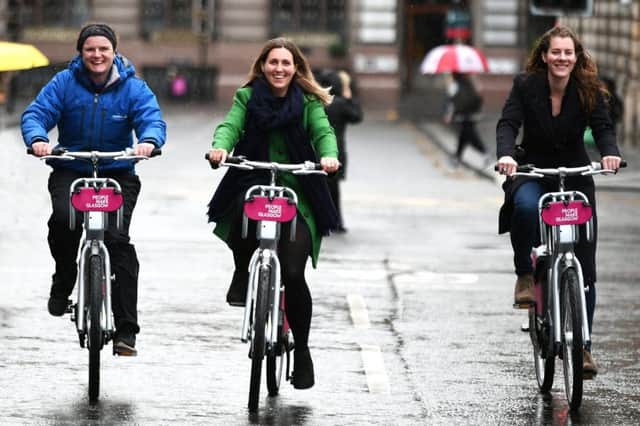All change for your commute with electric bikes, autonomous buses and new trains in 2020 - Alastair Dalton


Will you trying a different way to travel in 2020?
Whether you’re concerned about the environment, have pledged - again - to get fitter, or just fancy a change, there are some exciting new options for commuting and leisure travel that don’t involve petrol and diesel engine cars.
It’s part of the changing transport landscape in Scotland, which won’t necessarily be greener unless more people choose to change their travel habits.
Advertisement
Hide AdAdvertisement
Hide AdI’ve been saying for a while that we’re reaching the age of the electric bike, and following the instant success of Glasgow hire scheme after its launch last autumn, Edinburghers will finally get their chance to try them out en masse.
A fleet of 168 e-bikes - nearly three times Glasgow’s - is due to become available for rent at some point in the “spring”, around 18 months after Just East Cycles started traditional bike hires in the capital.
The number of electric bikes available under the Forth Bikes scheme in Stirling and Falkirk is due to grow further, while Dundee plans to launch an all-electric 350 bike hire scheme this year, which would make it Scotland’s biggest to date.
But if even an e-bike sounds too strenuous, you might like to try some of Scotland’s new trains.
ScotRail’s latest Japanese-designed electric fleet of 70 are finally all in service on the main line between Edinburgh and Glasgow and others across the Central Belt.
They accelerate faster and provide more space - with up to eight carriages - but disappointingly few services so far have cut the journey time between the two cities to 42 minutes. Passengers should expect more of those this year.
However, the outlook remains far less rosy on ScotRail’s busiest diesel routes, where delays to the refurbishment of a 40-year-old new fleet have caused major knock-on problems.
It has meant chronic overcrowding between Fife and Edinburgh is likely to continue. All 26 trains should have been in service a year ago, and the current estimate is the end of this year, so there may be no good news in 2020 for some.
Advertisement
Hide AdAdvertisement
Hide AdThings look more promising for LNER passengers on the east coast to London, which has just scrapped the diesel trains ScotRail is bringing in, and all its services are due to be operated by new Azumas by June. The most noticeable improvement is the extra legroom in standard class, although more space for luggage is still being added, following complaints.
For a truly novel experience, there’s the prospect of being driven to work in an autonomous bus. From late this year, commuters are due to be whisked over the Forth Road Bridge between Ferrytoll in Fife and Edinburgh Park on a fleet of Stagecoach single deckers which will drive themselves. A driver will remain on board.
As for those still wedded to their cars - and most Scots are - with major road schemes like the Aberdeen bypass complete, the focus will shift to the progress of finishing the A9 dual carriageway between Perth and Inverness.
Ministers announced nine years ago that the £3 billion scheme would be completed in 2025, but with most of the 80 miles still to be done, will it be this year that they announce that date has been put back?
The massive upgrade was justified on safety grounds, but what will it do for traffic growth?
The Queensferry Crossing is carrying more vehicles than its predecessor when any increase in travel was to have been by public transport.